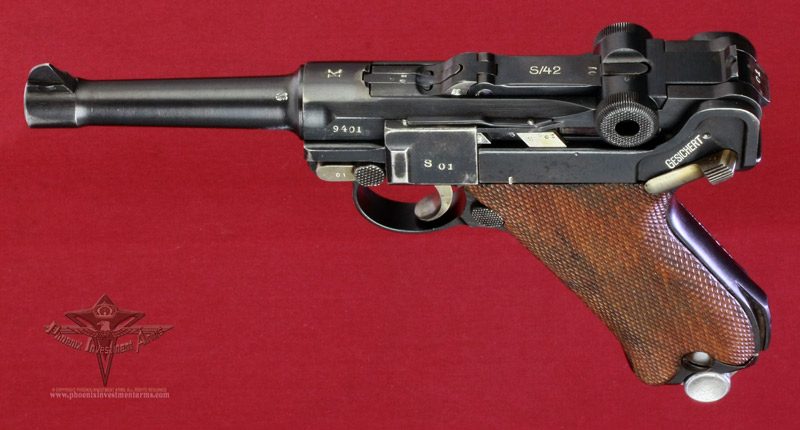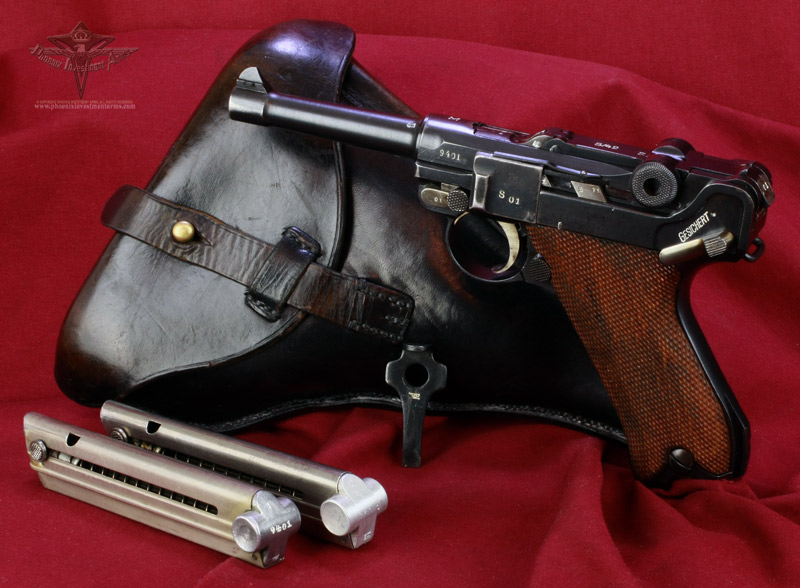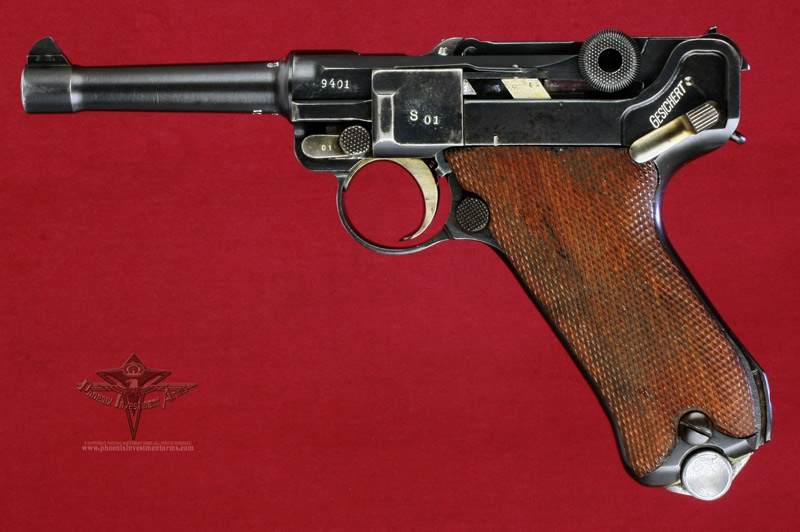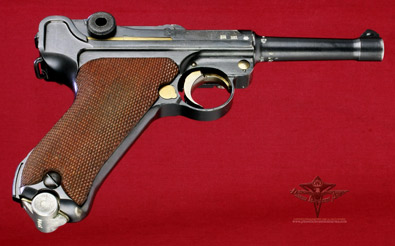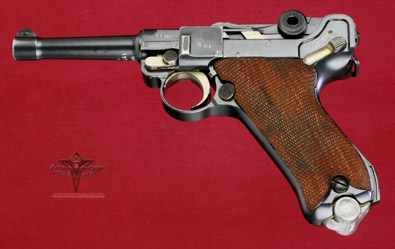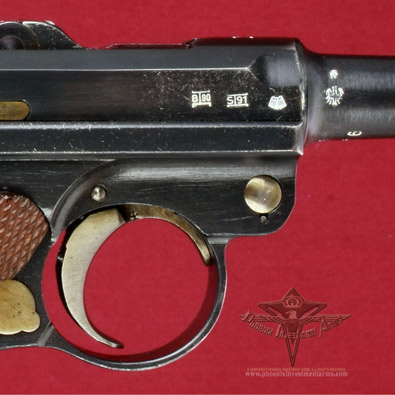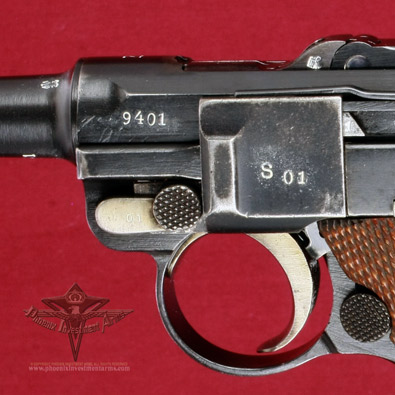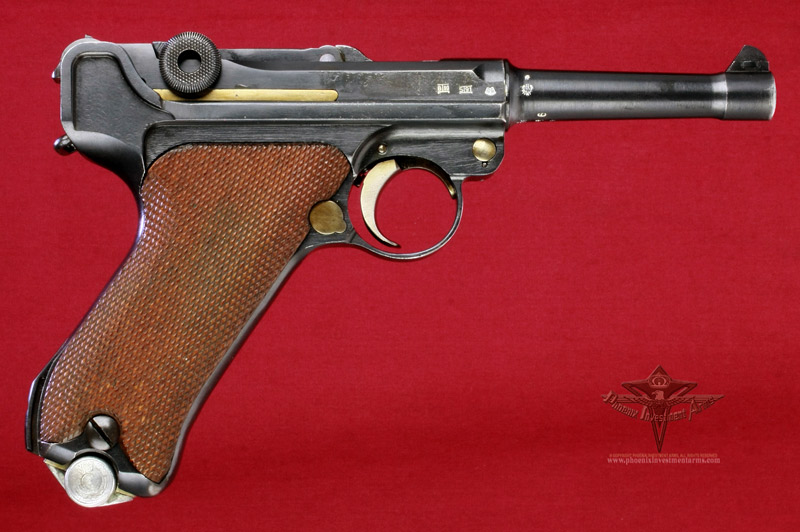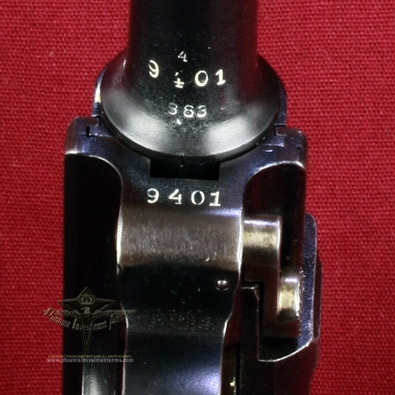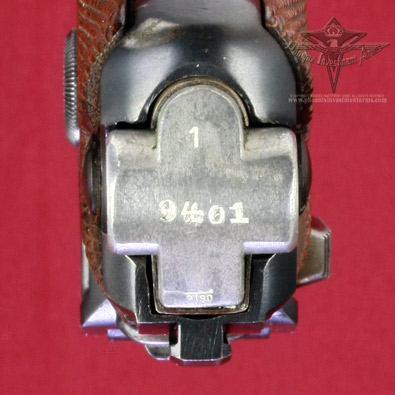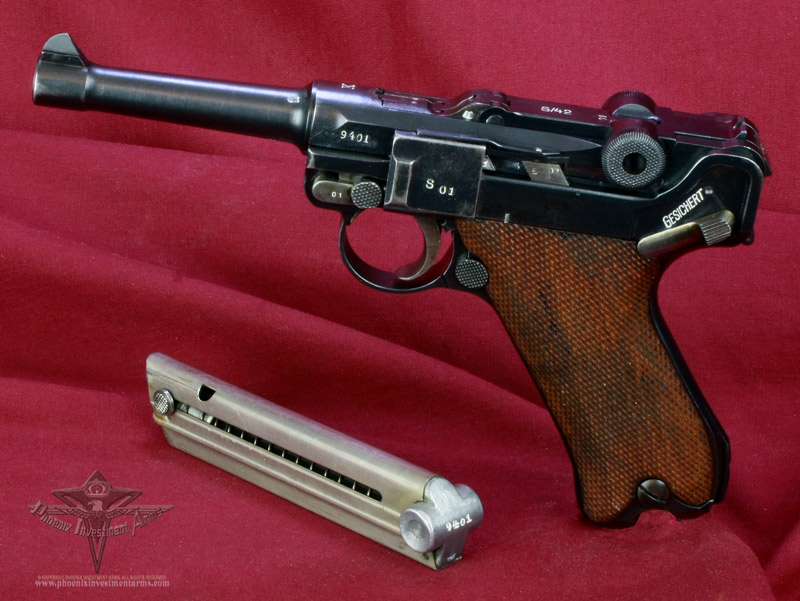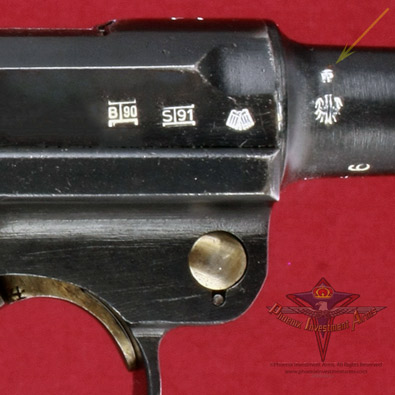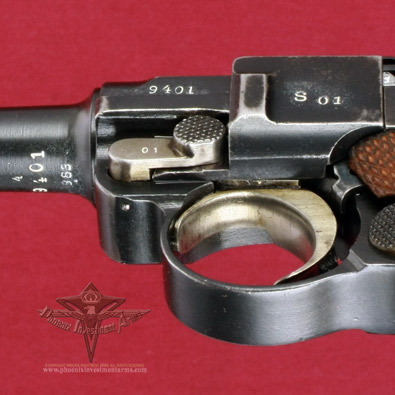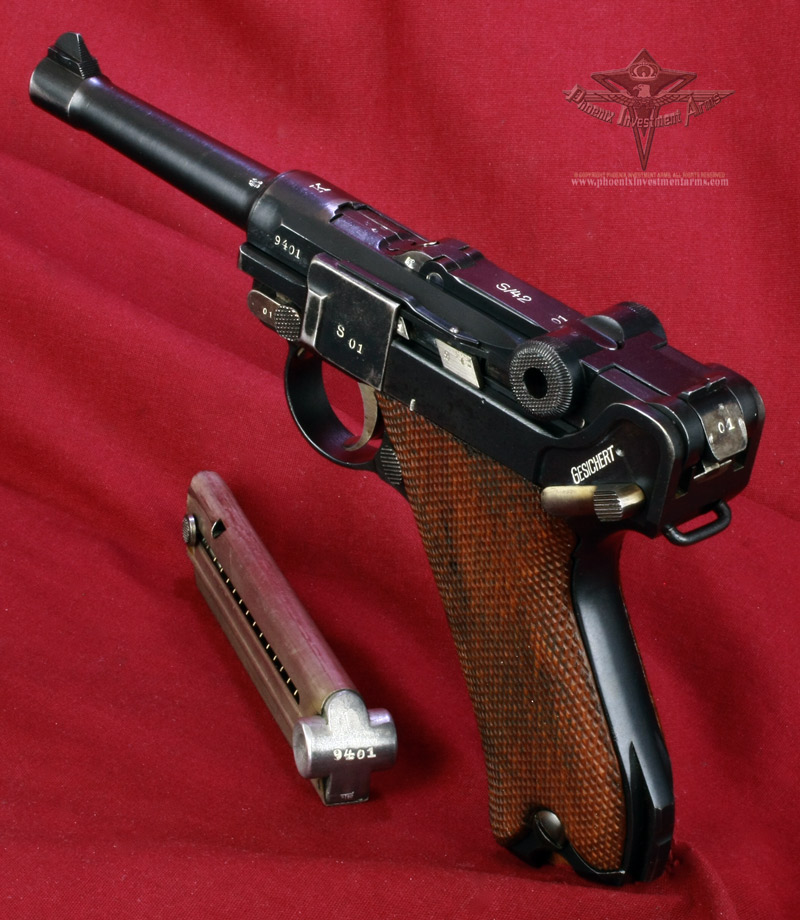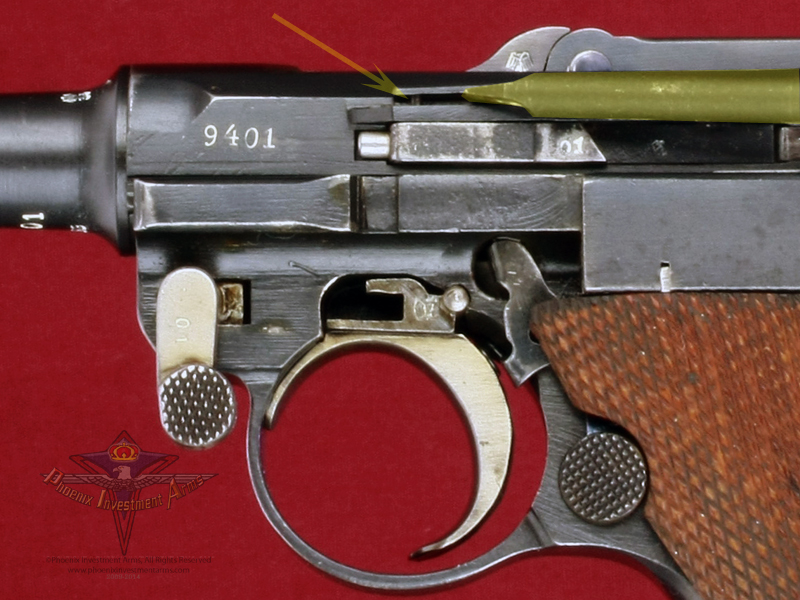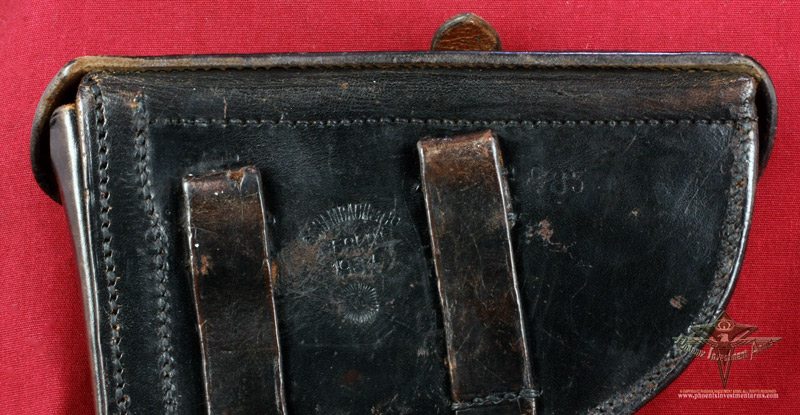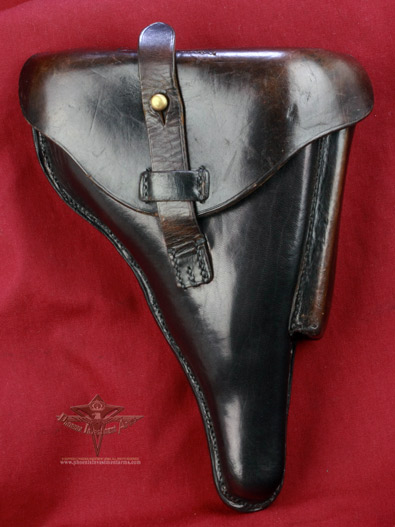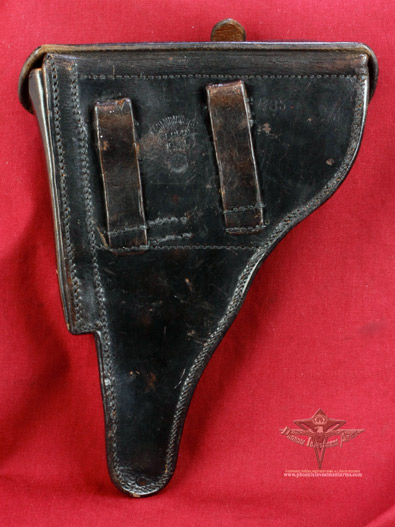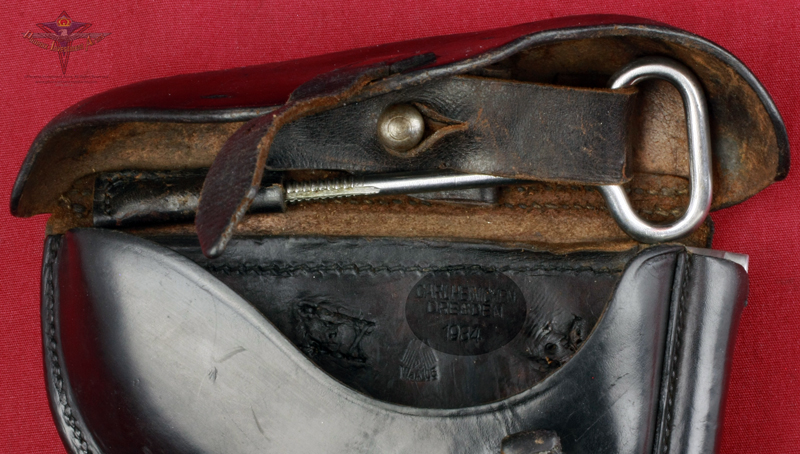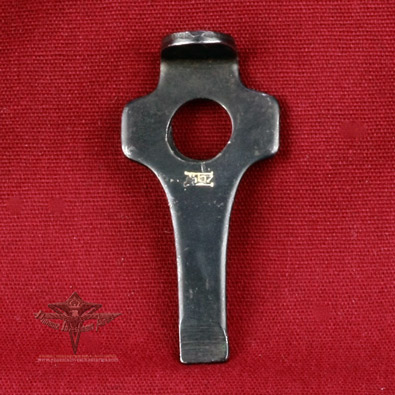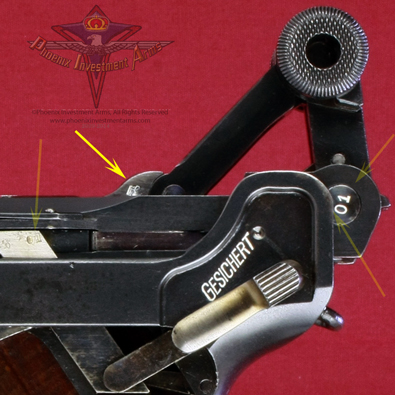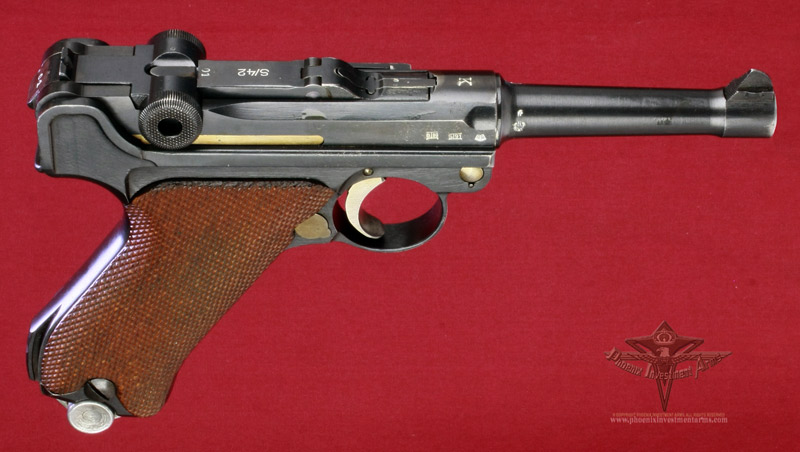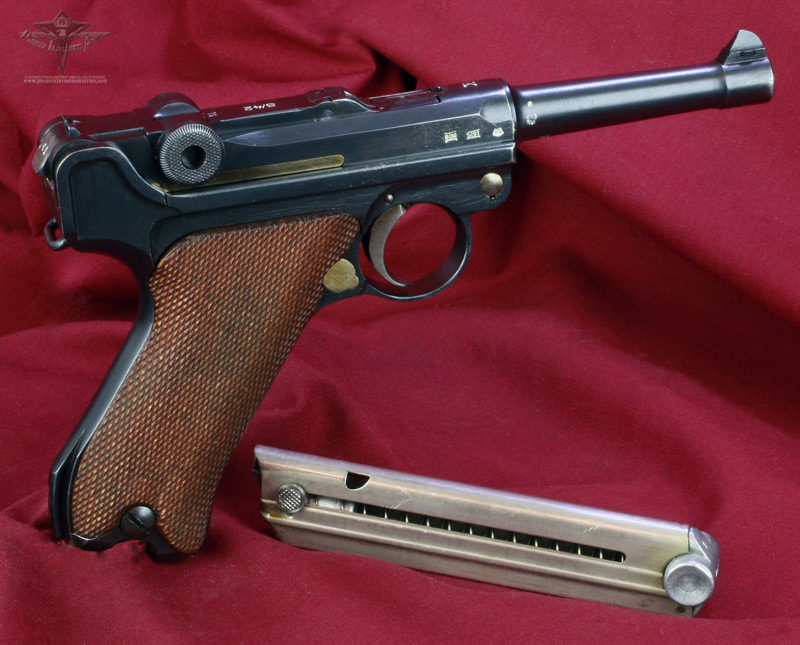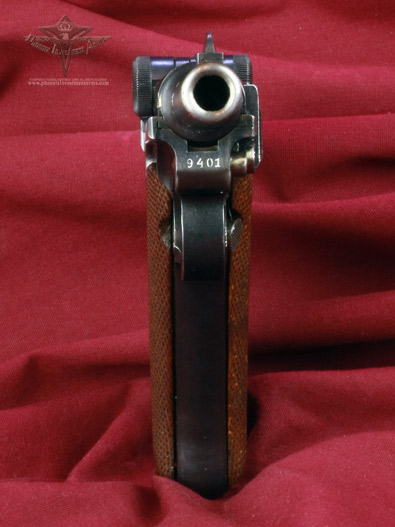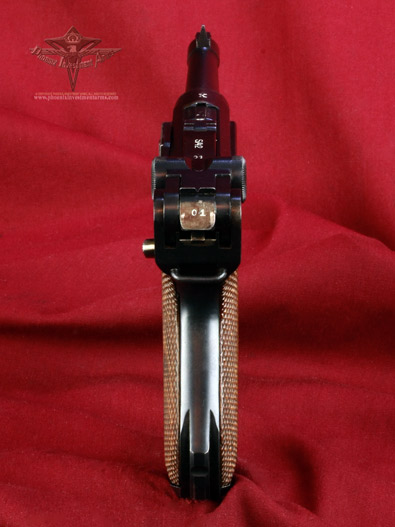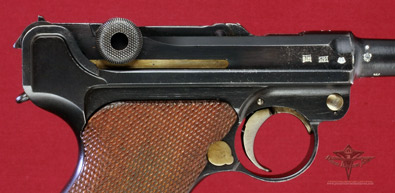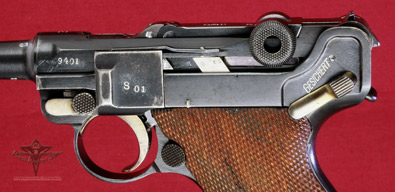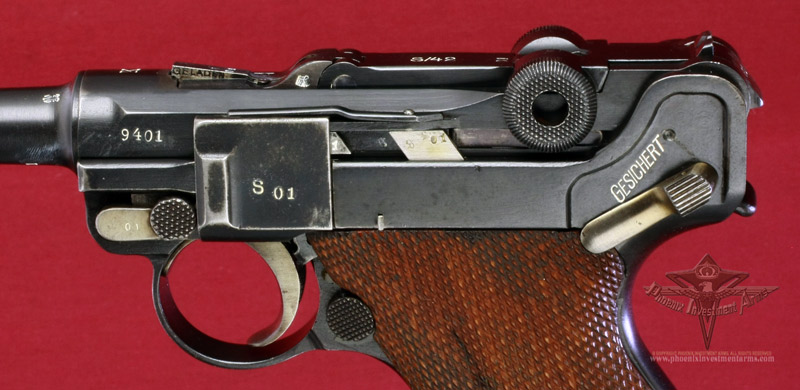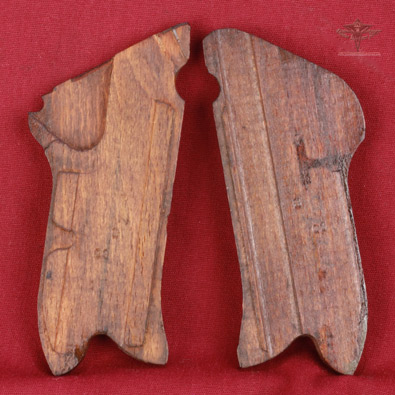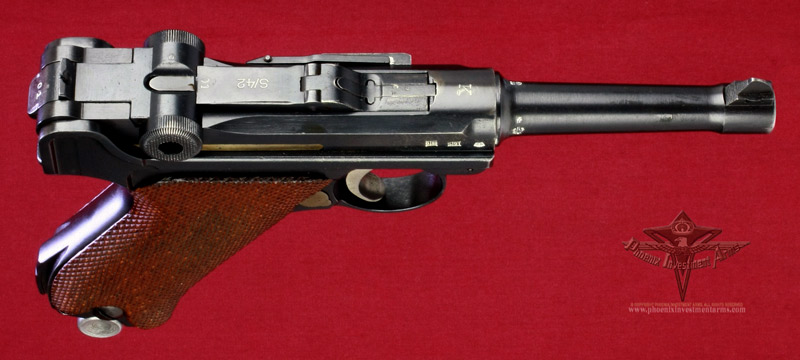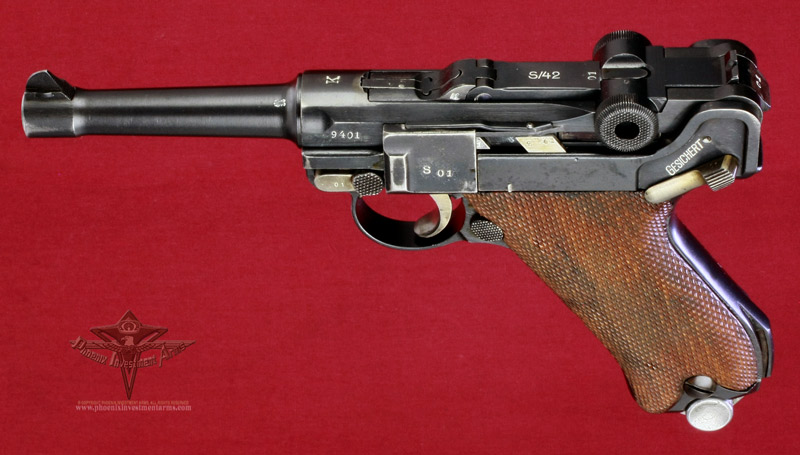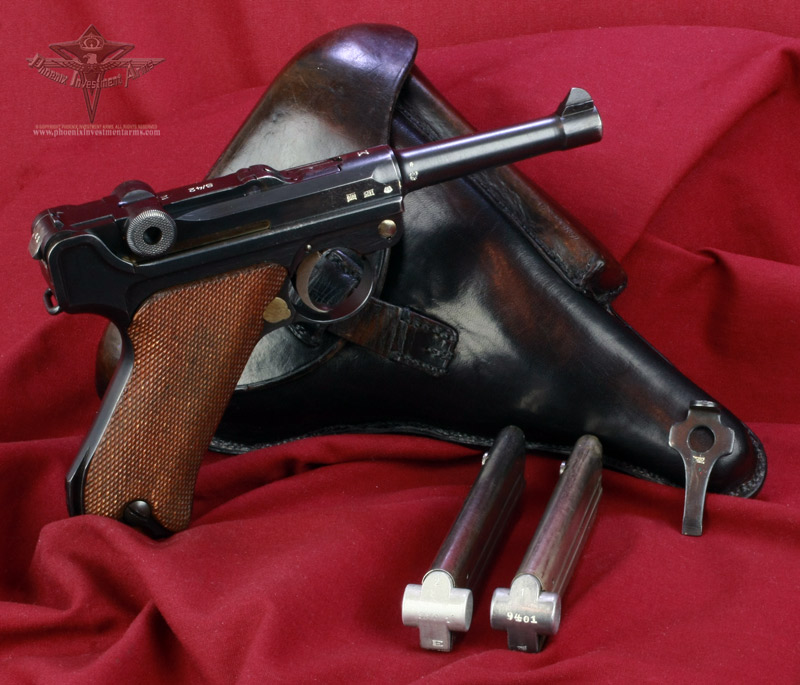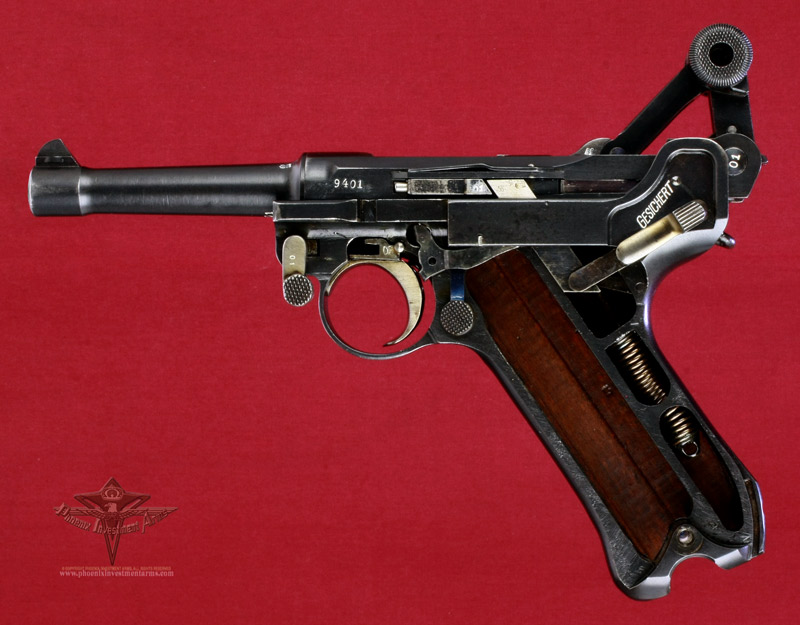 |
|
The inside of the gun is minty clean with
no signs of deterioration for its age and exhibits that craftsmanship of
the early Mauser production. Unusual is the use of a DWM frame
(129mm), that has not been reinforced in the rear or the 2mm extension
to protect the rear main axel pin which Mauser was manufacturing into
their Parabellums at the time. Therefore this one came from the
stock acquired from DWM. Below you can see the Scriptic "S" proof
on the firing pin retainer and proofed matching magazines. |
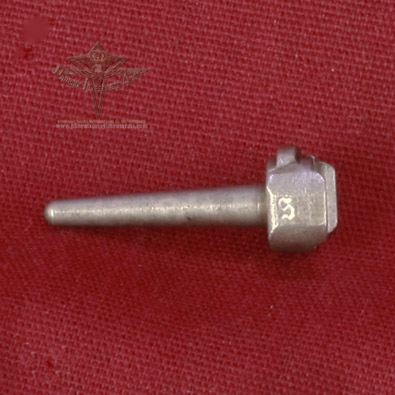 |
 |
|
As an
example of the transition in proofing can be found on the firing
pin retainer which has the Scriptic "S" proof. Above Right
are the two matching magazines with the B][90 proofs which
continued into the 1935 models. Police Lugers were numbered
numerically 1, 2, 3, for the extra magazines. The #1 was the
primary magazine and was in the gun while the other magazine was
in the holster and doesn't show a lot of wear. |
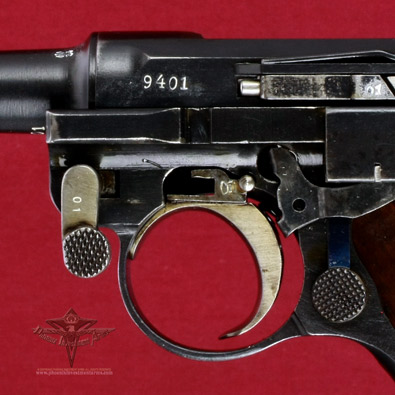 |
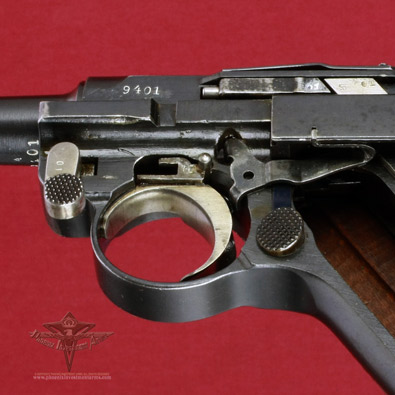 |
|
Here are
some close ups of the firing mechanism with the sear safety and
the magazine safety complete and intact just as installed.
This Parabellum has a PVT, explained later, which as a Police
Academy might have just used the gun in training and did not
respond to the requirement to remove the magazine safety. |
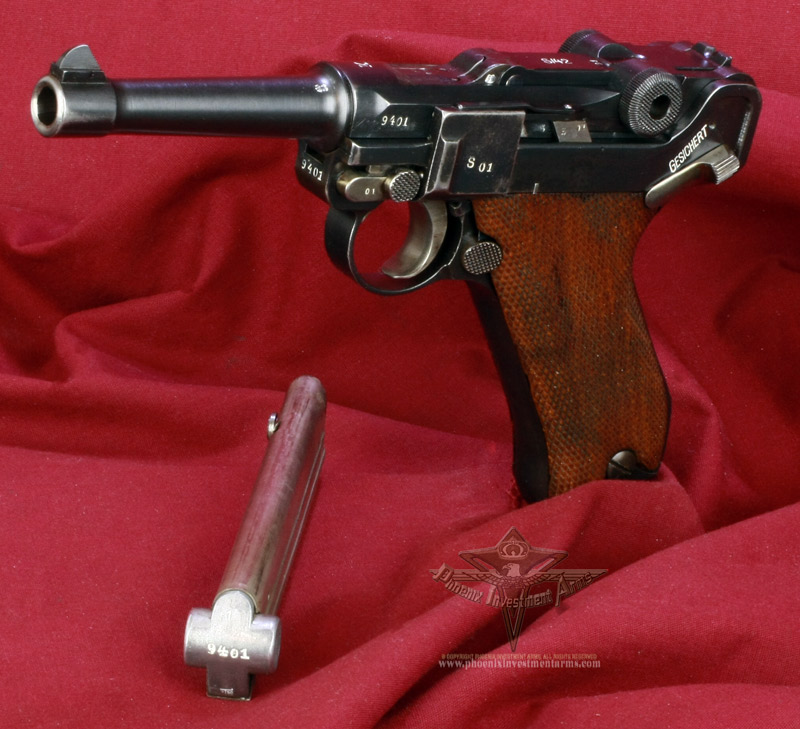 |
|
Serial number placement is in the military ("exposed") style.
The serial number appears on the front of the frame, on the side of the
locking bolt, on the trigger, on the bottom of the barrel, the side plate,
the left side of the receiver, the safety bar, the sear bar, the rear
connecting pin, and on the extractor. |
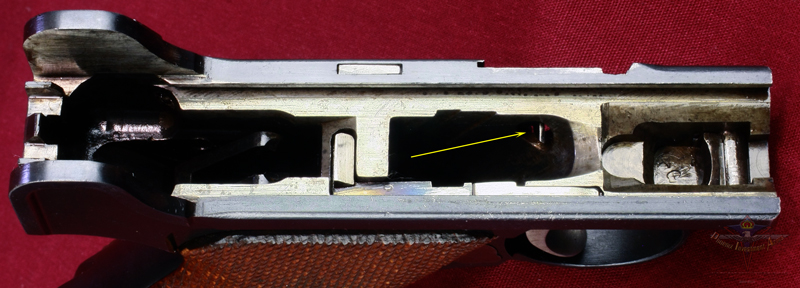 |
|
The inside
of the magazine well shows the very rare extension of the short
lived magazine safety in a K-Date! Imagine first of the
minimal amount of K-Date's dedicated to the Police, and then the
number of Magazine Safety's installed less the number rendered
inoperative. This is a jewel. |
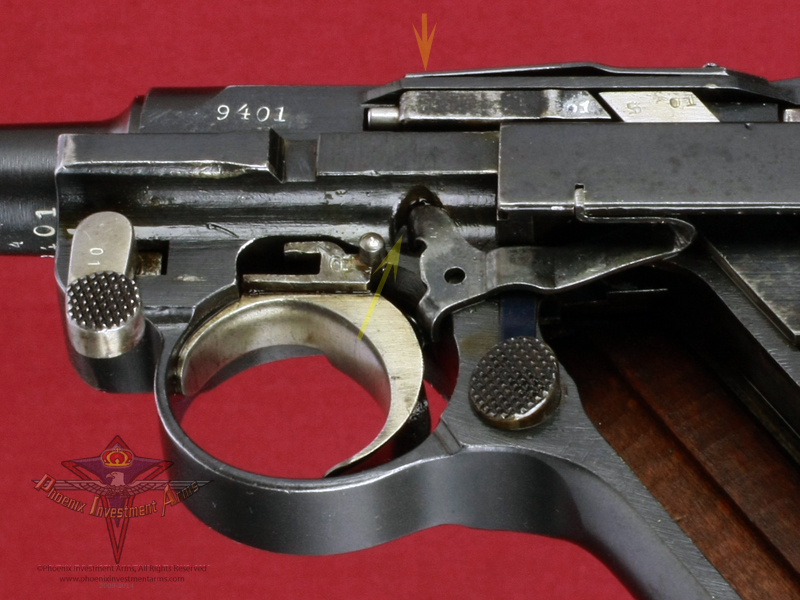 |
|
This K-Date
Police besides being very rare by itself has an INTACT magazine
safety. Shown above with the spring loop and pressed through a
drilled hole in the frame to the interior tab which is still
intact and this was the method of disabling the safety after the
Polizei Interior Ministry so ordered. |
